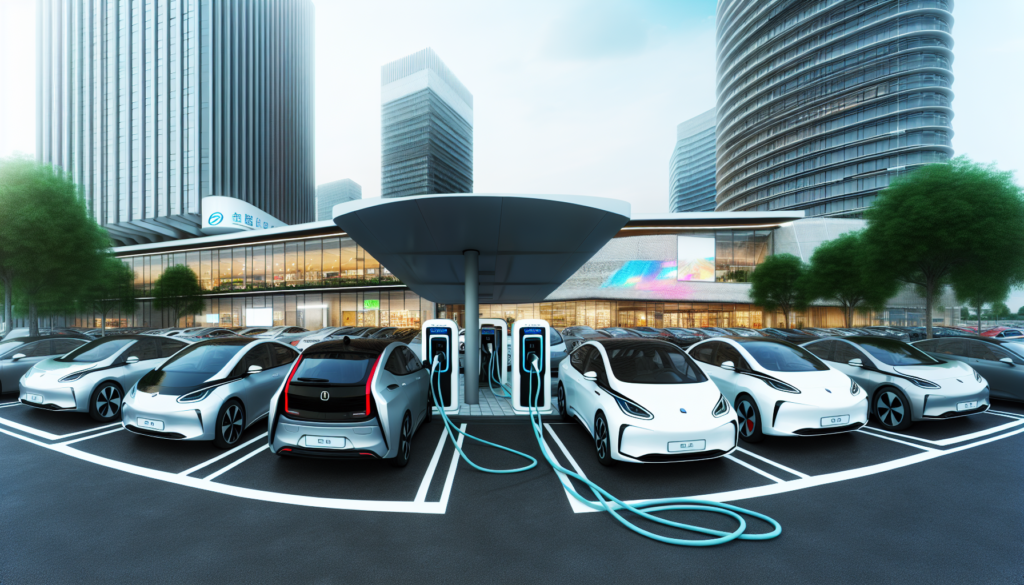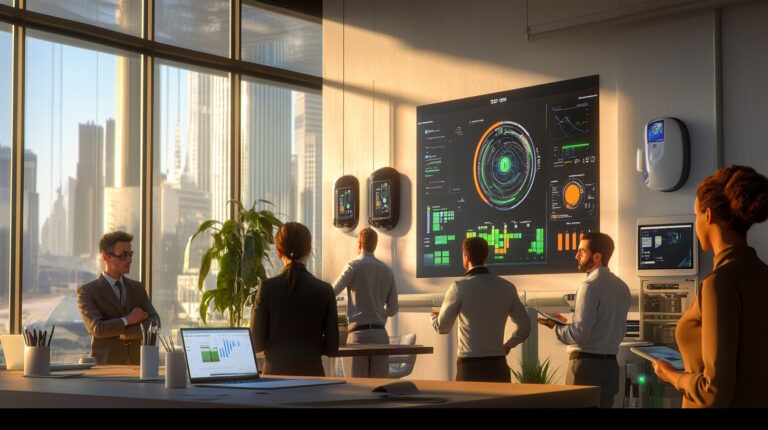Understanding How Electric Cars Work: A Journey into Electric Vehicle Technology
Article Insights
- Gain a deep understanding of how electric cars work and the mechanics behind them.
- Explore the essential components of electric vehicle technology that make EVs efficient and eco-friendly.
- Discover the key benefits of electric cars and their role in transforming the transportation sector.
- Learn about the future trends in electric vehicles, including advancements in battery technology and infrastructure.
The world is on the cusp of an automotive revolution as electric cars drive into the mainstream with promises of sustainability and superior performance. If you’ve ever wondered what happens under the hood of an EV, now’s your chance to unravel the intricacies of electric vehicle technology. From the propulsion system to energy management, this comprehensive guide will navigate you through the components that define how electric cars work, providing insights into the benefits of electric cars and their impact on a cleaner, greener future.
Driving Toward Change: What Sets Electric Vehicles Apart?
Electric vehicles (EVs) stand out in the automotive crowd not just for their sleek designs but, more crucially, for the way they operate so differently from traditional gasoline-powered cars. The fundamental distinction lies in their power source: EVs rely solely on electricity stored in battery packs, unlike gasoline vehicles that depend on internal combustion engines. This shift in power dynamics introduces a new realm of mechanics and performance.
Instead of fueling up at gas stations, EVs recharge their batteries using home charging stations, public installations, or even through innovative regenerative braking systems. This radical departure from traditional fueling methods also corresponds to fewer moving parts within EVs, reducing maintenance needs and potentially lowering long-term costs—something conventional car owners dream about.
Exploring Key Components of Electric Vehicle Technology
To truly appreciate how electric cars work, you must familiarize yourself with their core components, each working in harmony to deliver efficient and powerful performance while treading lightly on the environment.
The Electric Motor: Powerful and Efficient
At the heart of every electric vehicle is the electric motor, a marvel of modern engineering that converts electrical energy into mechanical energy to get the wheels turning. Unlike traditional engines, these motors deliver instant torque, providing rapid acceleration and a smooth drive. Depending on the design, EVs use either DC motors or AC motors, each offering different efficiencies and performance characteristics that suit varying needs.
Battery Pack: The Energy Storehouse
Serving as the energy reservoir, the battery pack is crucial in determining an EV’s range and driving performance. Most electric vehicles employ lithium-ion technology, celebrated for its efficacy and longevity. Battery capacity, typically measured in kilowatt-hours (kWh), directly influences how far an electric vehicle can travel on a single charge. Efficient management of charging cycles—how often and how fully the battery is charged—is essential for maximizing battery life and vehicle performance.
Power Electronics Controller: The Brain of the Operation
The power electronics controller plays a pivotal role by managing energy flow between the battery and motor. It optimizes performance and efficiency, ensuring a seamless transition of power. This component also introduces regenerative braking technology, a clever system that captures energy usually lost during braking, channeling it back to recharge the battery, thereby enhancing energy efficiency.
Transmission System: Simplifying the Drive
Unlike traditional vehicles with multi-speed transmissions, most electric cars utilize a single-speed transmission system. This setup simplifies driving while maximizing efficiency by directly connecting the motor to the wheels, minimizing energy losses and contributing to a smoother driving experience.
Cooling System: Keeping It Cool
Ensuring that everything runs smoothly involves maintaining optimum operating temperatures. Electric vehicles are equipped with cooling systems that prevent excessive heat buildup, especially in the motor and battery, safeguarding both performance and longevity. Many EVs utilize advanced liquid cooling systems to achieve this feat.
Electric Vehicle Technology: A Glimpse into the Future
Emerging trends in electric vehicle technology are shaping the future of driving, leading to exciting developments that hold promise for both consumers and the environment.
One area of significant advancement is battery technology. Solid-state batteries are garnering attention for their potential to offer higher energy densities and faster charging times, addressing range concerns that have historically deterred potential EV adopters.
Additionally, the integration of autonomous driving systems with state-of-the-art software is transforming electric vehicles into smart cars. Enhanced safety features and automation capabilities promise a future where driving is not just safer but more efficient.
The expansion of charging infrastructure is another vital trend, as it directly affects the accessibility and convenience of adopting EVs. The growth of smart grids ensures optimized energy distribution, aligning with peak energy supplies for more efficient vehicle charging.
Why Choose Electric? The Benefits of Electric Cars
Switching to electric doesn’t just benefit the environment—though the environmental perks of reduced emissions and the ability to integrate renewable energy sources are profound. It also offers tangible economic advantages.
While EVs may come with a heftier upfront price tag, they typically boast lower operating and maintenance costs. This economic edge is bolstered by government incentives, such as tax rebates or credits, designed to encourage more drivers to make the switch.
The driving experience is another compelling reason to go electric. Compared to their gasoline counterparts, electric vehicles promise a quieter ride, drastically reducing noise pollution and delivering swift, immediate acceleration that many drivers find exhilarating.
Join the Electric Revolution!
As we steer toward a more sustainable future, understanding how electric cars work and the potential of electric vehicle technology becomes increasingly vital.
With incredible benefits ranging from environmental to economic, EVs are carving their place as a dominant force in the automotive world.
Whether considering a future purchase or simply keeping pace with technological advancements, embracing the electric revolution is a significant step toward a cleaner, greener future.








